By Tom Welch
The Historic Lodgings Tour on Saturday, March 26th offers Orcas Islanders and visitors alike a unique opportunity to view important historic structures that are vital links to island days of long ago.
We live in a beautiful and unique island environment that is enhanced in so many ways by a strong connection to our history, and this opportunity to visit the historic lodging establishments on the March 26 Tour is a great way to make that connection even stronger.
When the lodgings on tour were built in the late 19th – early 20th centuries, orchards covered hillsides overlooking fields ripe with oats, corn, wheat and barley, while the steamboat docks bulged with inbound goods and outbound crops and boxes of fruit.
These historic structures served a wide variety of needs when they were constructed, with some begun as rough log cabins intended to house pioneer families, while others, for more commercial pursuits, used lumber produced by our early sawmills. Orcas Island life of the late 19th and 20th century is reflected in the furnishings as well as in the overall construction of these beloved relics of yesterday, thanks to the care and concern of the respective innkeepers.
Turtleback Farm Inn — Crow Valley
The importance of agriculture on Orcas Island is seen in the majestic farmhouse structure of the Turtleback Farm Inn, overlooking Crow Valley. This ‘Folk National’ style of farmhouse construction, with large, airy rooms that could be readily remodeled or expanded to accommodate growing families or house farm laborers, was ideally suited to island life in the late 1800s. It took a lot of labor to do farm work, and big farmhouses were valuable assets to island farmers and their families. The Turtleback Farm Inn is an excellent example of this important historic architecture.
Blue Heron Bed & Breakfast — West Sound
The Blue Heron B&B is the former home of the Verrier family, who homesteaded the site in 1895. Serving many purposes through multiple alterations over the years, the house was converted to a B&B in the 1980’s. The Verrier family is noteworthy for several reasons, not least among them the fact that they represented an important cultural aspect of pioneer settlement on Orcas Island that is not well-represented today. As French-Canadians, the Verriers were a part of the legacy of the Voyageurs, the early explorers who ranged through Western North America in pursuit of furs and gold. Other island families sharing this heritage included the Iotte’s of Dolphin Bay, the patriarch of this family left Montreal at the age of 16 and walked across Canada to the Pacific Ocean.
Deer Harbor Inn — Deer Harbor
The Deer Harbor Inn takes pride of place as the first resort on Orcas Island, established in 1910 at the farm where Patrick and Mary Norton had settled in 1891. Platform tents in the pasture and a remodeled farmhouse were the origins of Norton’s Inn, still in operation as the Deer Harbor Inn, and the beginning of our resort era. Mary Norton became locally famous for her fried chicken dinners, and the saltwater pool that Patrick built was a favorite attraction for many years.
The Place at Cayou Cove — Deer Harbor
When Louis Cayou settled near Deer Harbor sometime before 1860, the world was a much different place. Great Britain competed with the United States for these islands, and ownership was still disputed. Savage Northern Indians raided whites and local natives alike, plundering longhouses and remote cabins at will in murderous raids for slaves and treasure. The Hudson’s Bay Company had run the last American off Lopez Island in 1853, the Pig War upset the fragile balance between U.S. and British interests in 1857, and by the time Cayou began building a log cabin for his native wife and himself near Deer Harbor, fears of a looming Civil War had taken hold of the nation.
The house his son Henry built at Cayou Cove is reflective of the dramatic changes wrought in a single generation on Orcas Island.. The home’s brick foundation utilized ballast brick that his father’s ships used when shipping timber to California.
Kangaroo House Bed & Breakfast — Eastsound
Kangaroo House B&B, built in 1907 as a hotel, was considered a ‘modern marvel’ because of its woodburning furnace, kerosene lamps, and indoor plumbing. Josie the kangaroo, brought home by merchant marine Captain Ferris, the owner, left an island legacy in the name ‘Kangaroo House’. The wide, expansive porch, interesting architecture, and period furniture make Kangaroo House an interesting visit for all.
Outlook Inn — Downtown Eastsound
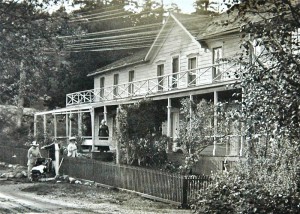
Where will you be when you tour this historic lodging? Right across from Indian Island at the Outlook Inn!
Charles Shattuck homesteaded much of Eastsound and built the cabin that later grew into the Outlook Inn. Changing as the community grew, Shattuck’s log cabin later became a post office, a general store, a dancehall, and, finally, the island’s first Lodging Inn. Ideally situated at the head of Eastsound Bay, overlooking Indian Island and Madrona Point, the Outlook Inn has anchored the west side of the village from the earliest days.
Orcas Island Historical Museum — Downtown Eastsound
The Orcas Island Historical Museum, comprised of six original pioneer log cabins, is centrally located in the heart of Eastsound Village. Each cabin in the structure is, in and of itself, an important historical artifact. The core collection of some 6,000 items is the sole physical repository of important historic and pre-historic artifacts reflective of the unique native, natural, and pioneer lifestyles and environments on Orcas Island.
Many, many volunteers have spent countless thousands of hours working to preserve the history of our lovely island home, and this Historic Lodging Tour is an exciting way to be part of that proud tradition. Exploring and understanding the history of our island can have a powerful influence on how each of us acts to steward and preserve our own small part of it, and can help insure that future generations are able to appreciate all that we enjoy.
Whether you’ve been here for fifty years or fifty days, you’re part of Orcas Island history. Love it, learn it, and live it.
The Tour: History Lives Here Tour of Historic Lodgings is on Saturday, March 26, from 11 a.m. to 4 p.m. Tickets are $25 adult, $15 student, children free under 12; and may be purchased online at www.orcasmuseum.org, or in person at the Historical Museum in Eastsound, Art of the Salish Sea on the Eastsound waterfront, Chamber of Commerce office, and San Juan Insurance at the north end of Lovers Lane.
On the self-guided tour, find answers to Mystery History Questions, bid on great auction items, such as a night at a B&B, or a brunch at another. Free van transportation is available for the tour; call 376-3441 to reserve.
Tom Welch is the author of Images of America: Orcas Island; proceeds from the sale of the book benefit the Orcas Island Historical Society. He is the past president and trustee of the Orcas Island Community Foundation and the Orcas Island Historical Society.
**If you are reading theOrcasonian for free, thank your fellow islanders. If you would like to support theOrcasonian CLICK HERE to set your modestly-priced, voluntary subscription. Otherwise, no worries; we’re happy to share with you.**

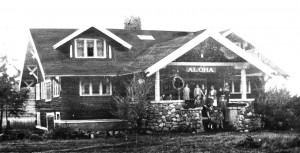
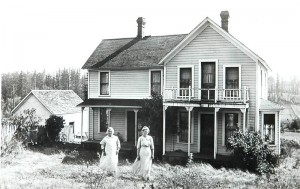
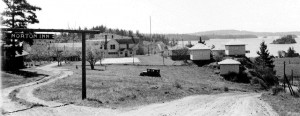
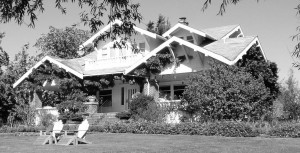







what a great look at a wonderful strong past